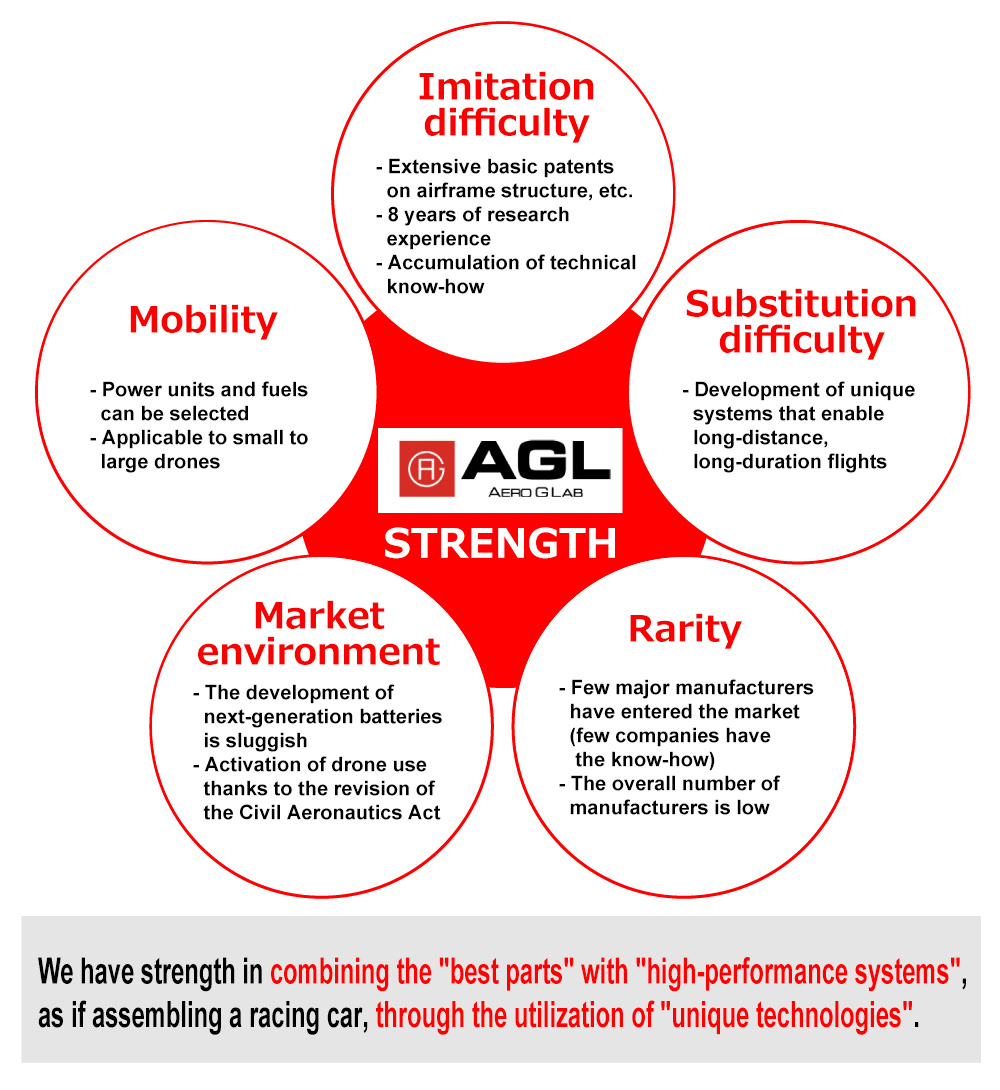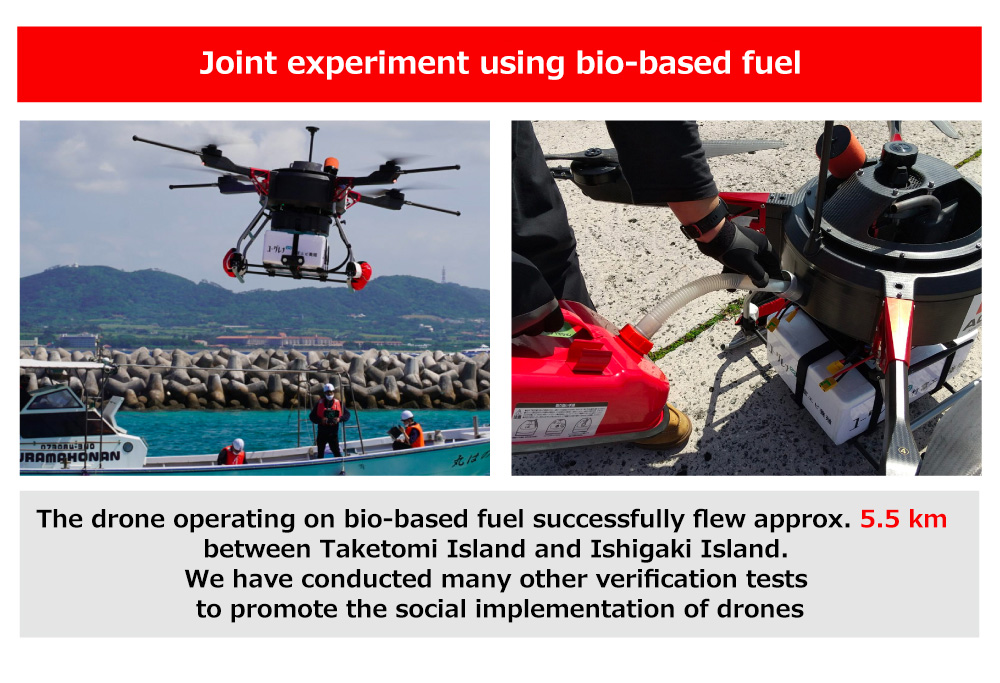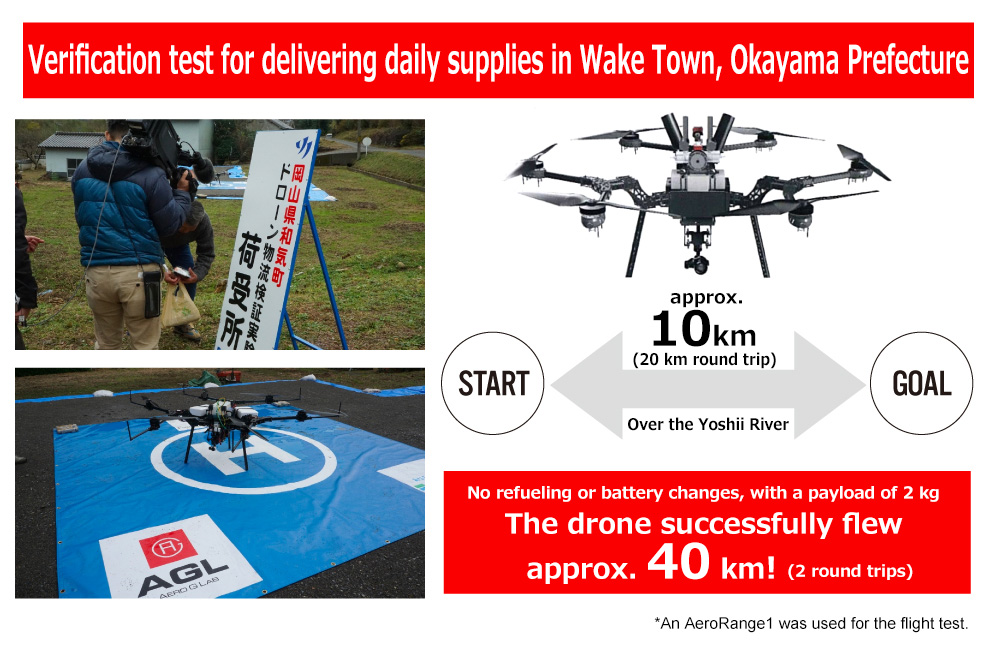AERO G LAB, whose design processes start with designing drone airframes, can flexibly respond to requests for customization, including the selection of power units as well as fuel and changes in airframe specifications.
In addition to fuel tank arrangement and fuel storage methods for enhancing safety, we have also obtained patents for the methods of cooling engines and installing electrical components.
About
Technological capabilities for producing drones that are based on unique design and optimum component configurations
Technical know-how and patent acquisition based on many years of experience in R&D of drones
Hybrid drones developed to solve drone-related issues
Drones receive high expectations because they make effective use of the space between the “”ground”” on which automobiles travel and “midair” in which airplanes and helicopters fly. At the same time, there is a big issue that must be overcome if drones are to penetrate into society in the future. The issue is “flight time.”
Currently, most mainstream battery-powered drones have a maximum flight time of approx. 30 minutes. The actual time available for drone operation is typically about 15 to 20 minutes, due to the time required for takeoff and landing and to prevent a sudden loss of battery power during a flight. Longer flight time is essential for the wider practical application of drones.
Therefore, we developed the “AeroRange Series,” our hybrid drones for solving the biggest issue, flight time.
Results accumulated from verification tests
Another feature of hybrid drones is that their power units can be changed. When the feature is utilized, hydrogen fuel or bio-based fuel can be used for them.
In a joint experiment with Euglena Co., Ltd. in 2021, we used a mass-produced “AeroRangeQuad”. The drone, which used bio-based fuel, successfully flew approx. 5.5 km between Taketomi Island and Ishigaki Island.
In this way, we aim to realize environmentally friendly carbon-zero drones by promoting support for renewable energy.
Verification tests for delivering daily supplies
In a verification test, conducted by the Ministry of Land, Infrastructure, Transport and Tourism in 2018, for delivering daily supplies to a mountainous area in Okayama Prefecture, our drone continuously flew approx. 40 km in about 2 hours, in two round trips.
In a verification test performed in cooperation with a major car accessory store in 2021, we used our drone for immediate delivery in anticipation of a case in which medical supplies were suddenly needed for a medical visit in an area far away from a hospital or pharmacy.
AERO G LAB drones which pursue high quality, high performance, and safety
Company profile
Trade name
Aero G Lab Co., Ltd.
Established
October 1, 2012
Head office
1-12-26, Nyoidani, Minoh City, Osaka Prefecture, Japan
support@aerog-lab.com
Board
President & CEO: Shinichi Tani
Board Director & COO: Ken Urushibata
Outside Director: Yutaka Wano
Outside Auditor: Yukihiko Okamura
Advisor
Technical Advisor: Jun Tanida
(Professor of Information and Physical Sciences, Graduate School of Information Science and Technology, Osaka University)
Management Advisor: Koji Yoshida
Capital
72,500,000 JPY
Business
- Development, design, manufacture, and sales of UAVs (unmanned aerial vehicles)
- Various commission-based experiments and development
- Aerial photography and various video production
Major clients
Kansai Television Co. Ltd.
ACSL Ltd.
Japan Weather Association
Greetings from the President & CEO

Before multirotor helicopters, so-called “drones,” began to attract the spotlight in Japan, I was fascinated by the fun and depth of the world of radio-controlled helicopters, but at the same time, I was painfully aware that beginners may feel awkward or be rather frightened about operating them. I also felt a sense of emptiness at the thought of leaving such advanced technology as a mere hobby for enthusiasts.
In the early days, drones were expensive; a drone cost several million yen. Therefore, they were not easily accessible. In addition, for the commercial use of drones, there were many issues such as reliability and durability, and skilled techniques were required for operating them. However, their greatest advantages over conventional radio-controlled helicopters, “the ease of hovering” and “the ease of handling,” seemed to have unlimited potential for both hobby and professional use.
AERO G LAB was founded in October 2012 and is still in its infancy. However, its backbone is firmly supported by the technical, development, and operational capabilities that have been steadily accumulated since the days of radio-controlled helicopters. We are not merely an aerial photography company, nor are we merely an assembler. In a comprehensive manner, we design and develop the things that we wish for or want to use, including software and hardware, and our staff constantly improves all aspects based on the feedback of know-how gained in actual fields. By doing so, we continue to grow into a company that can confidently provide drone solutions, having both flexibility and proposal capabilities to meet all customers’ needs.
Currently, we have three bases: The “Minoh Base,” which has integrated functions of research, development, manufacture, and sales; the “Gein Base,” which functions as a human resource development center; and the “Miki Training Center,” which can always be used for flights. With motivated staff, substantial equipment, and a myriad of ideas, we are confident that AERO G LAB will be the best partner for all companies interested in the future of drones.
Aero G Lab Co., Ltd.
Shinichi Tani, President & CEO
Access
Head Office
1-12-26 Nyoidani, Minoh City, Osaka Prefecture 562-0011
FAX: +81 72 722 3351
By train
15 minutes walk from “Minoh Station” of Hankyu Minoh Line
By bus
From “Senri-Chuo Station” of Osaka Monorail, or from “Senri-Chuo Station” of Kita-Osaka Kyuko Railway
Bus stop No. 7, bus No. 85
To “Nyoidani Jutaku-mae via Luminous Minoh no Mori” (a circular route)
1 minute walk from the “Nyoidani Jutaku-mae” bus stop
Bus stop No. 11
Bus No. 19 or 20
To “Minoh via Nyoidani”
6 minutes walk from the “Nyoidani” bus stop





